Located in the hinterland of Central China, between the Yangtze River and the Hanjiang River, Shennongjia is high in the southwest and low in the northeast. There are rising layers of peaks among which six boast an altitude of more than 3,000 meters. Particularly, the apex in Central China, the Shennong Peak towers over the rest peaks and reaches a height of 3,106.2 meters, so Shennongjia has been honored as "the Roof of Central China". In addition, the area has been designated as a UNESCO World Biosphere Reserve, Global Geopark, and World Heritage Site.
Its distinctive geographic location, coupled with superior natural environment and climatic conditions, brings up a dense forest and river network, which gives birth to its exceptional biodiversity. That's why Shennongjia has been applauded as one of the three major biodiversity centers in China. In this aspect, it is worth mentioning that this region used to be a popular destination for international plant-collecting expeditions during the 19th and 20th centuries. In this way, it has played a critical role in the history of botanical research. In detail, the Park enjoys a forest coverage of a stunning 88% with the core area standing at 96%. There is a wide variety of rare and ancient relict plants. To this end, many scientific investigations have been initiated by the Chinese Academy of Sciences and the Hubei Provincial People's Government for the exploration of the mysterious region, collecting mountains of precious first-hand data.
In terms of Chinese bryophytes, Shennongjia falls into Central China and is the convergence of the north and south zones of the species. It is also valued as one of the major distribution regions of endemic bryophyte species in China and East Asia. To this point, a survey on the local bryophytes was launched by a joint expedition of China and the United States in the 1980s, collecting and identifying 281 species but only 9 among which are liverworts and hornworts. When it came to around 1999, another field research was performed by Liu Shengxiang and others, ending up with the collection of over 800 bryophyte specimens and the identification of 214 species, including 35 varieties of liverworts. Even with such amazing achievements, the findings are only a drop in the bucket with the consideration of countless species in the area. We estimate that at least 400 species of bryophytes grow in this area, including numerous North-South transitional species and Chinese or East Asian endemic species.
To verify the estimation, a baseline survey of the bryophytes in the area has been initiated by the Bryophyte Group of the National Plant Specimen Resource Center (NPSRC) with the strong support of the NPSRC and Shennongjia National Park.
The team of nine researchers conducted two field surveys in May and July 2023 in the core areas of Shennongjia National Park, spreading their footprints in Shennongding area, Dajiuhu Wetland, Tianyan Scenic Area, Xingshan County, Badong County, and Zhushan County. Specifically, the team was divided into groups based on detailed regions and habitat characteristics for line transect surveys. They collected more than 1,800 bryophyte specimens and took over 8,000 photos. The survey covered over 30 small sites in Muyu Town, Dajiuhu Town, Hongping Town, Nanyang Town of Xingshan County, Gaoqiao Town, Yanduhe Town of Badong County, and Guandu Town of Zhushan County, encompassing the following spots: Guanmenshan Scenic Area, Tianshengqiao Scenic Spot, Shennongtan Scenic Spot, Swallow Cave, Savage Cave, Jizi Gully, Zhangbao River, Xiaoqianjiaping, Xiaolongtan, Shennong Valley, Dajieling, Taiziya, Banbiyan, Lookout Tower, Golden Monkey Ridge, Nanxi River, Dalongtan, No.4 to No.9 lakes of Dajiuhu Wetland, Xiaojiuhu, Tianmenya, Hongping Gallery Scenic Spot, Longmen River, Ecological Station, Xiaohekou, Wanchaoshan (including Baiyangzhai and Sanchakou), Fairy Mountain, Xiaoxi West Bay, Xiaoshennongjia (including Wenjia River, Shilongpo, and Maoyuping), and Baili River (including Moping, Antelope Gully, and Nianziping).

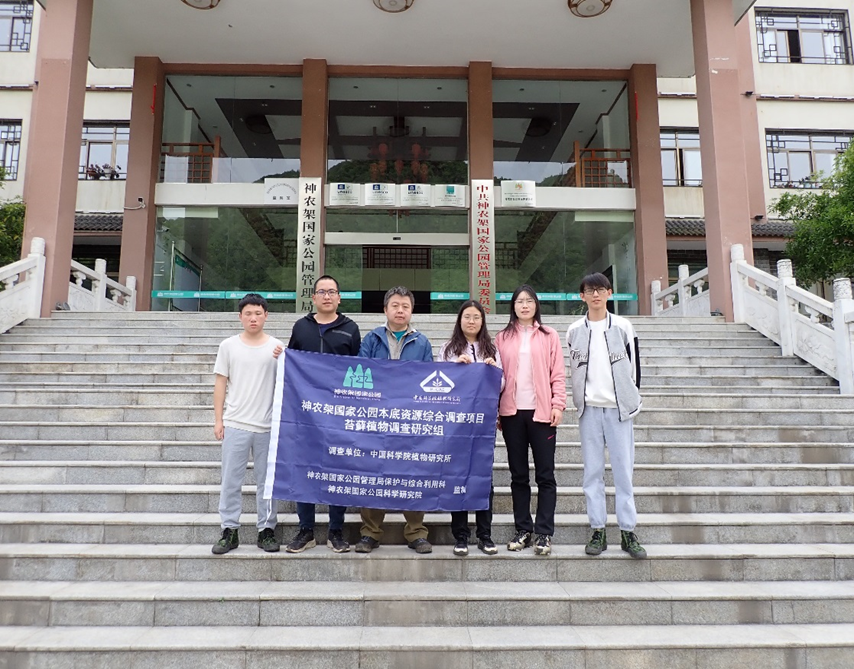 Members of the Survey Team
Members of the Survey TeamThe bryophytes collected by the survey members have the following features:
Bryophytes are extremely rich in the area but with great distributional differences due to varied habitual environments and natural conditions. To be specific, they were found to grow densely in the Shennongding Scenic Area, Tianyan Scenic Area, and Xiaoshennongjia Area. In contrast, their species are fewer in the spots that are dry and affected by human activities and arid climates.
Under fir and bamboo forests at high altitudes spread patches of varieties of hylocomiaceae and climaciaceae clusters as well as some scattered ones of sphagnum. Their species and growth status vary dramatically with the season even at the same spot.
The discovery of hornworts has contributed to the full records of all three major classifications of bryophytes in Shennongjia National Park, including mosses represented by bryum argenteum hedw., liverworts represented by Marchantia polymorpha L., and hornworts represented by Phaeoceros carolinianus (Michx.) Prosk. Particularly, the last one accounts for a small proportion of bryophytes with no more than 30 species recorded in China. They are mainly distributed in tropical areas such as Yunnan and Taiwan. The discovery of the hornworts in Xiaoshennongjia indicates the completeness of the bryophyte flora and the species diversity in the area.
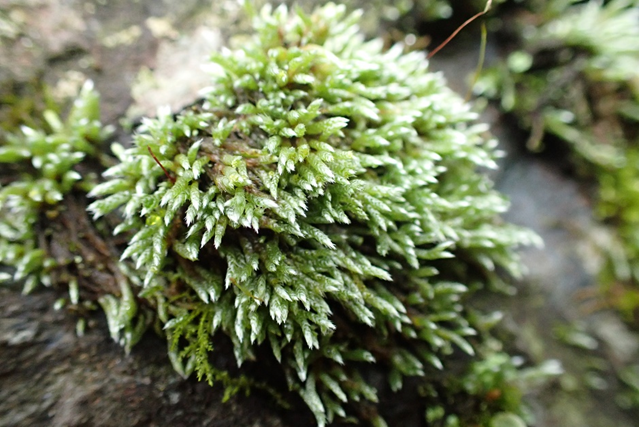 Bryum argenteum Hedw. along Wenjia River of Xiaoshennongjia
Bryum argenteum Hedw. along Wenjia River of Xiaoshennongjia
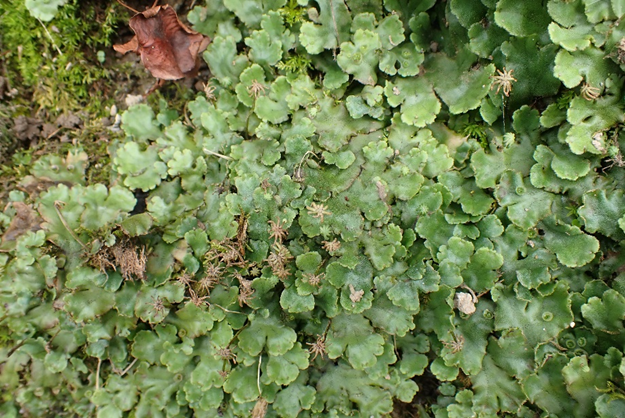 Marchantia polymorpha L. in Maoyuping of Xiaoshennongjia
Marchantia polymorpha L. in Maoyuping of Xiaoshennongjia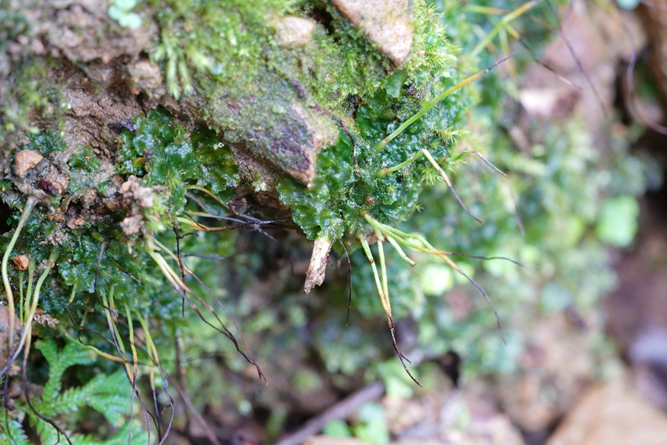 Phaeoceros carolinianus (Michx.) Prosk in Shilongpo of Xiaoshennongjia
Phaeoceros carolinianus (Michx.) Prosk in Shilongpo of Xiaoshennongjia
The bryophytes found in the area by now are counted to have 65 families, 156 genera, 326 species, 5 subspecies, 8 varieties, and 1 variant. Among them, liverworts falls into 23 families, 33 genera, 74 species, 5 varieties, 5 subspecies, and 1 variant. As for mosses, there are 42 families, 123 genera, 252 species, and 3 varieties.
Among the registered, some are newly recorded in Hubei Province, including the ones ranked in the lists of national second-class protected wild plants or threatened species on the IUCN Red List. Here are the examples listed as follows:
Preissia quadrata (Scop.) Nees
Preissia quadrata (Scop.) Nees falls into the genus Preissia of the family Marchantineae and is an autogenus. They were classified into the genus Marchantia by foreign scholars based on molecular evidence in 2016 and resumed to be an independent genus by Zheng Tianxiong, a Chinese scholar, based on trait distinctions such as the gemma cup and the oil body in 2022. They are domestically distributed in Heilongjiang, Jilin, Xinjiang, Qinghai, Yunnan, and Taiwan. In this aspect, they were first found in Hubei or specifically in Tianmenya in the Tianyan Scenic Area and Shennong Valley in the Shennongding Scenic Area, etc. They were found to be in great shape in terms of population and growth status.

Diphyscium chiapense var. unipapillosum (Deguchi) T. Y. Chiang & S.-H. Lin
Diphyscium chiapense var. unipapillosum (Deguchi) T. Y. Chiang & S.-H. Lin is classified into genus Diphyscium of family Diphysciaceae which is unigeneric with its name derived from the short seta. The Diphyscium species are easy to identify due to their big capsule and the long sharp spiny of the inner perichaetial bract. There are recorded to be about 15 species around the globe, among which 6 species and 1 variety grow in China. In particular, two species were registered in Hubei, including Diphyscium foliosum and Diphyscium fulvifolium which was discovered in Shennongjia. It is also worth noting that the Diphyscium chiapense var. unipapillosum found near the research trail of Guanmenshan Scenic Area during this survey is the only variant of the genus distributed in China, which was reported in Jiangxi, Hunan, Taiwan, and Zhejiang.
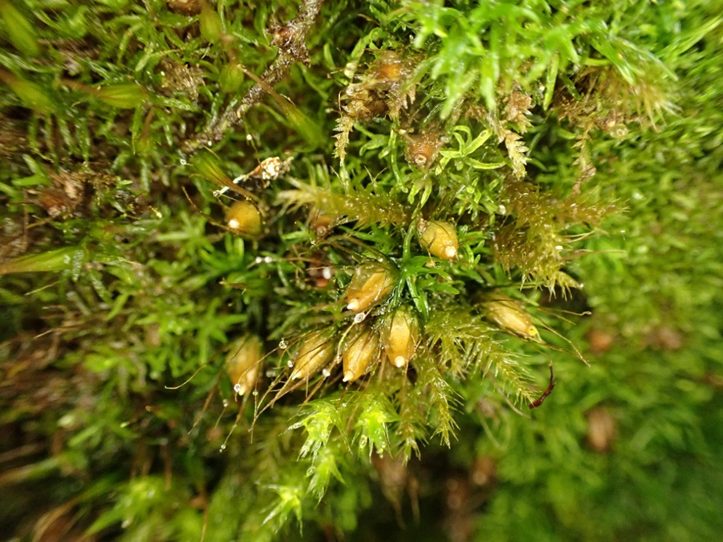
Sphagnum squarrosum Crome
Sphagnum squarrosum Crome is specified into the genus Sphagnum in the family Sphagnaceae. The Sphagnum is currently quite popular for its great value in ecology, economy, and scientific research. It is recorded to have more than 50 species in China, among which 7 species and 1 variety were registered in Hubei. The Sphagnum squarrosum Crome discovered in the Abies fargesii Franch. forest near Taiziya of Shennongding area during this survey is one of the five species of bryophytes in the List of National Key Protected Wild Plants in China released in 2021. As a second-class protected wild plant, the Sphagnum squarrosum is mainly distributed in the northeast, northwest, and southwest of China and is particularly well known as a dominant species in peat bogs in Northeast and Southwest China.
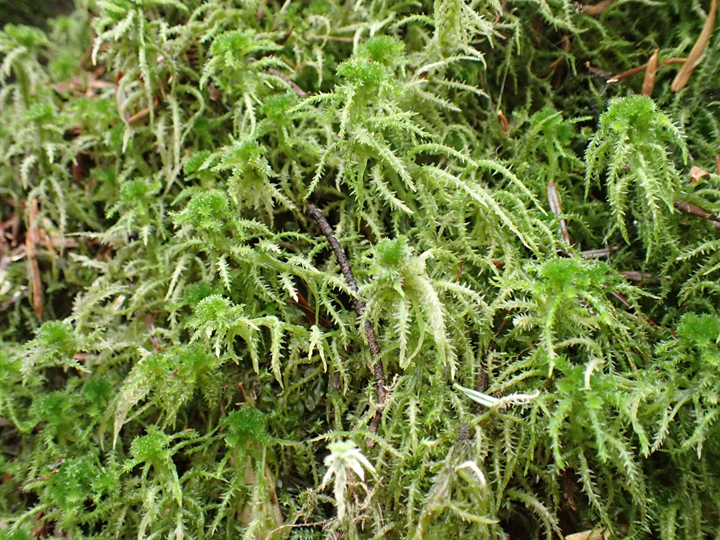
Oreoweisia setschwanica Broth.
Oreoweisia setschwanica Broth belongs to the genus Oreoweisia in the family Rhabdoweisiaceae and is labeled to be endemic to China. The type specimen was collected in Yanyuan County, Sichuan Province in 1914. Since its publication, it had never been reported again in China for over one century until this discovery in the forest of Golden Monkey Ridge in the Shennongding Scenic Area. In this aspect, the species has been classified as Critically Endangered (CR) in the China Biodiversity Red List: Higher Plants and as an endangered species (EN) in the International Union for Conservation of Nature’s Red List of Threatened Species.

Orthotrichum jetteae B.H. Allen
Orthotrichum jetteae B.H. Allen was found to be distributed in the woods near Kumufengchun spot in the Dajiuhu Scenic Area during the survey. It belongs to the genus Orthotrichum in family Orthotrichaceae and is endemic to China. Its type specimen was collected in Suiyang County, Guizhou. Forty species of the Orthotrichum are recorded in China and this species is mainly distributed in Guizhou, Sichuan, Hunan, and Gansu, etc. It has been classified to be vulnerable in the China Biodiversity Red List: Higher Plants.
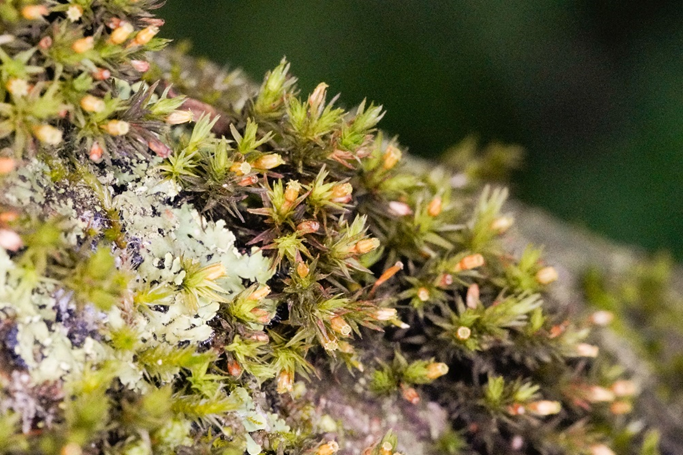
The above is part of the bryophyte species which were newly found to be distributed in Hubei. From the preliminary identification results, the bryophytes in Shennongjia boast great significance and specialties, which can be demonstrated by the Sphagnum squarrosum Crome, a national second-class protected wild plant, and Oreoweisia setschwanica Broth., a critically endangered species classified in the China Biodiversity Red List. The area boasts incredibly rich species of Orthotrichaceae, which is similar to the species richness of the family in Gongga Mountain National Nature Reserve. More findings are bound to be released as the identification of specimens continues.
We appreciate the Precision Collection Program of the National Plant Specimen Resource Center and Shennongjia National Park for sponsoring this survey. We are also grateful to the following organizations for strongly supporting our field investigation: Administration of Shennongjia National Park, Hubei Wanzhaoshan National Nature Reserve Administration, Hubei Badong Golden Snub-nosed Monkey National Nature Reserve Administration, Hubei Duheyuan National Nature Reserve Administration, Hubei Shibalichangxia National Nature Reserve Administration, and Hubei Shennongjia Forest Ecosystem National Observation and Research Station. (Original/Bryophyte Group)

 Members of the Survey Team
Members of the Survey Team Bryum argenteum Hedw. along Wenjia River of Xiaoshennongjia
Bryum argenteum Hedw. along Wenjia River of Xiaoshennongjia Marchantia polymorpha L. in Maoyuping of Xiaoshennongjia
Marchantia polymorpha L. in Maoyuping of Xiaoshennongjia Phaeoceros carolinianus (Michx.) Prosk in Shilongpo of Xiaoshennongjia
Phaeoceros carolinianus (Michx.) Prosk in Shilongpo of Xiaoshennongjia 







